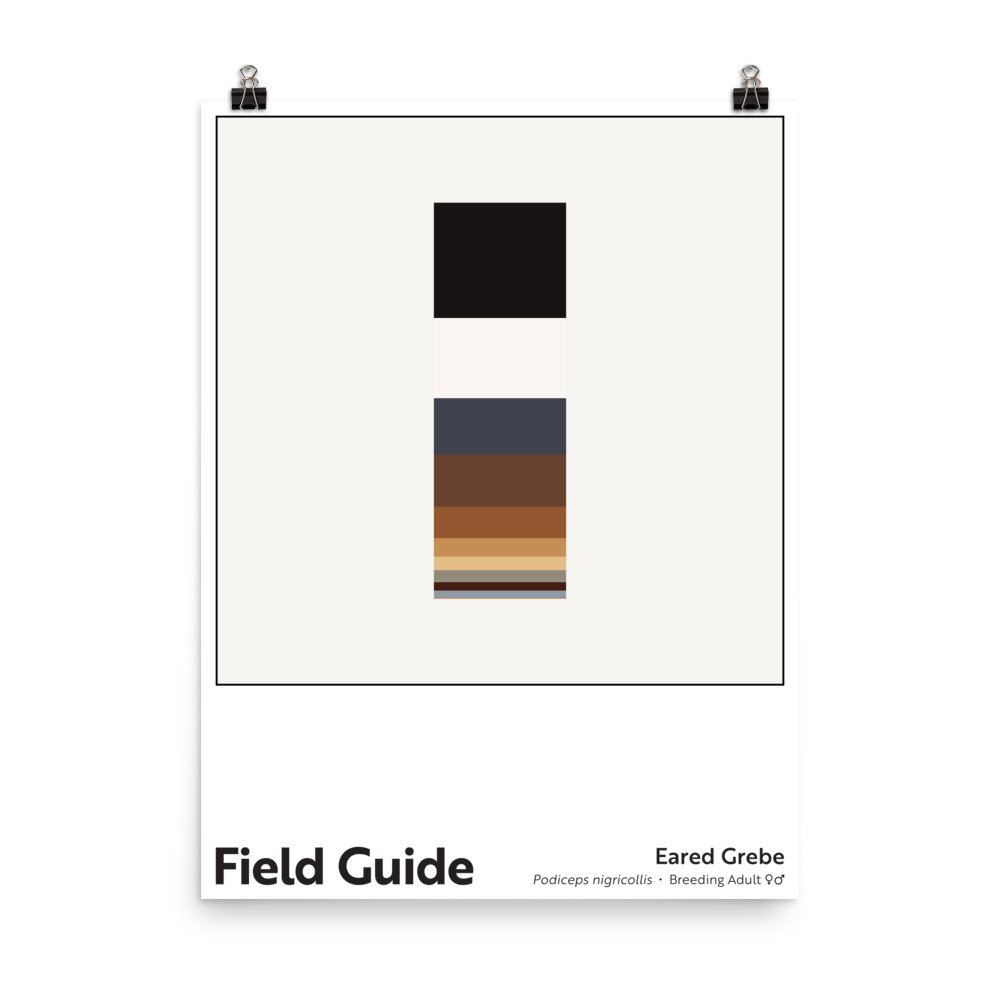Field Guide : Eared Grebe
Field Guide : Eared Grebe
Unlimited edition. 18 x 24 inch, museum-quality poster on matte paper.
The eared grebe’s scientific binomial is Podiceps nigricollis, which roughly translates as “black-necked anus foot.” That may sound like an abusive epithet, but it’s actually an accurate descriptive name. When dressed in breeding plumage, the grebe has a warm black neck, so “black-necked” is an obvious choice, but what about “anus foot”? The grebe’s legs project from its body almost at the extreme posterior, near the bird’s cloaca, a body part for which “anus” suffices as a substitute. That far-back placement makes this striking waterbird awkward when standing or, more infrequently, walking; to balance, eared grebes must hold themselves in a nearly upright position and their walk, rarely observed, can best be described as a tiptoe stumble. In fact, they so eschew land that a grebe seen on shore is usually ill or stranded.
The eared grebe is anything but awkward in the water, however. An expert diver and aquatic hunter, the species has done well for itself, and is currently the most numerous grebe species in the world, with especially robust populations in Canada and the United States. Following their spring and summer breeding season, most of North America’s eared grebes journey to either California’s Mono Lake or Utah’s Great Salt Lake, where they can feast on brine shrimp and aquatic flies that thrive in those incredibly saline environments. During other times of year, the grebe prioritizes different foods, including small fish, amphibians, and mollusks.
This color column is based on a breeding adult with its striking cinnamon and fawn ear tufts and brown sugar flanks. The same adult grebe, in non breeding plumage, appears mostly grey, white, and black, but its dramatic red eye still pops (see color column detail). Speaking of breeding, the eared grebe is an excellent parent, with both sexes dividing labor. Working together, they construct their floating mound nesting platform and, after the young begin hatching, they tag team nursery time, with one parent carrying the littles on its back while the other parent forages for food.
Note: These archival poster prints feature rich, appealing colors. I encourage customers to take care in handling them until they are framed/protected for display; the darker colors on the matte paper can be scratched. They ship rolled, so customers need to flatten them before framing (or have their framer do so).
Charitable Sales Model: Whenever one of these poster prints is purchased, a charitable contribution equal to 10% of the print’s cost (or $3.60) is made to a nonprofit working to tackle environmental or social challenges. Read more about my charitable sales model here.


